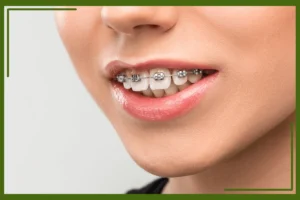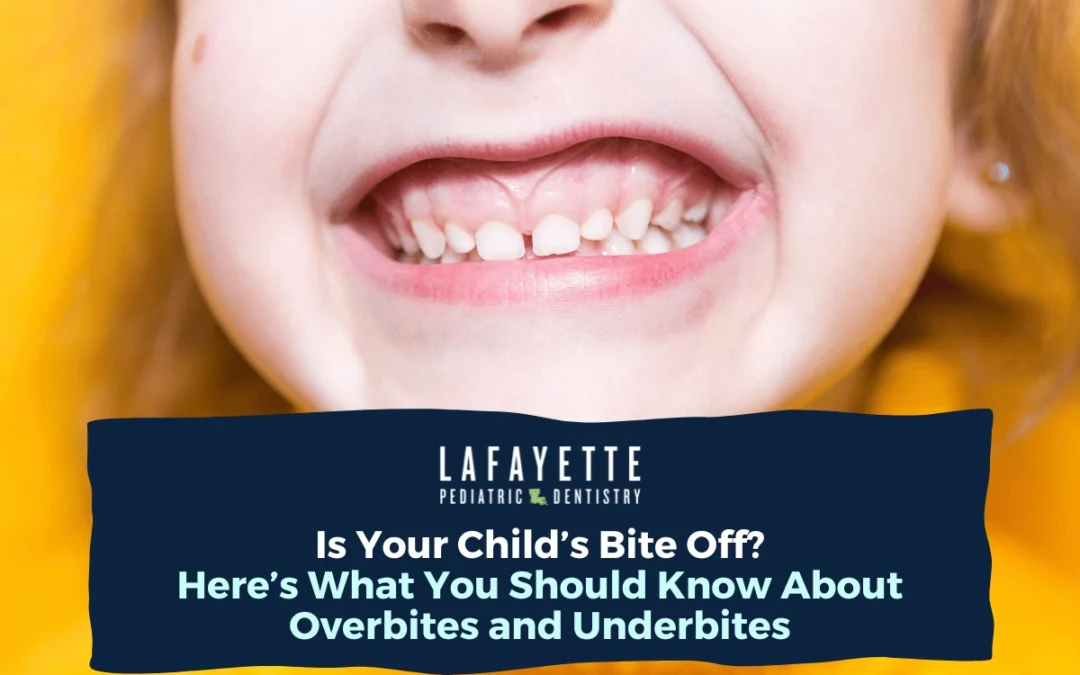Ever notice something a little “off” about your child’s smile or the way their teeth line up? Maybe their bite doesn’t look quite right? You could be seeing early signs of an overbite or underbite.
These dental issues affect a lot of kids, and the earlier you catch them, the easier and more effective treatment tends to be.
Underbites vs. Overbites

Underbites happen when your child’s lower teeth extend past their upper teeth when their mouth is closed. It makes it look like the lower jaw is protruding forward. This can sometimes be subtle or quite pronounced.
Overbites occur when the upper teeth extend too far over the lower teeth. While a slight overlap is normal (the upper teeth should naturally cover the lower teeth by a small amount), an excessive overbite can cause problems.

Both conditions tend to have a genetic predisposition. If you or your partner has an underbite or overbite, the likelihood of your child developing one as they grow is higher. But genetics isn’t the only factor!
Other causes include excessive nail biting, teeth grinding, and thumb-sucking past age 3. These habits can slowly change how your child’s teeth and jaws develop.
Is It Normal for Kids to Have an Underbite or Overbite?
A small overbite or underbite is completely normal! But if the overlap becomes excessive, it might need correction. Many kids have slight misalignments that don’t require intervention, but more severe cases should be addressed.
Underbites and overbites can affect your child’s appearance as they grow, which might impact their self-esteem during those crucial developmental years. But beyond cosmetic concerns, these conditions can also affect their health. Some potential problems include:
- Tooth erosion and decay
- Jaw pain and discomfort
- A higher risk of gum disease
- Speech challenges (especially with certain sounds)
- Temporomandibular joint disorders (TMD)
- Difficulty biting and chewing
How to Spot an Underbite or Overbite in Your Child
While sometimes you can spot these issues when they’re really obvious (like seeing the lower teeth in front of the upper teeth), the best approach is to keep up with regular dental appointments.
Your pediatric dentist can monitor your child’s dental development and catch an overbite or underbite that may need treatment since sometimes it’s not so obvious to untrained eyes! If needed, they might refer you to an orthodontist for more specialized care.
During checkups, we specifically look at:
- How the teeth meet when your child bites down
- The development and position of adult teeth as they emerge
- Changes in jaw alignment as your child grows
- Any speech issues that might be related to teeth alignment
Possible Treatment Options
Since children’s bones are still growing, they are softer, which means their teeth move more easily than adults’. That’s why childhood is the perfect time to address bite issues. Most of the time, overbites or underbites in children can be corrected with orthodontic treatment, which might include:
- Braces. Traditional metal braces or clear aligners can gradually shift teeth into the proper position.
- Retainers. These help keep teeth in place after treatment or make small adjustments when needed.
- Palate expanders. These devices widen the upper jaw to create better alignment.
- Removing baby teeth. In some cases, pulling a few baby teeth can make room for adult teeth to come in the right way.
The exact treatment really depends on the severity of the underbite or overbite and your child’s unique conditions, since every child is different.
If you’re concerned about your child’s bite, go ahead and schedule an appointment with us at Lafayette Pediatric Dentistry. Our team of local pediatric dentists is here to give your child the expert care and guidance they need for a healthy, growing smile.
We proudly serve families in Lafayette, Youngsville, Broussard, Carencro, Breaux Bridge, and the surrounding Acadiana communities.
